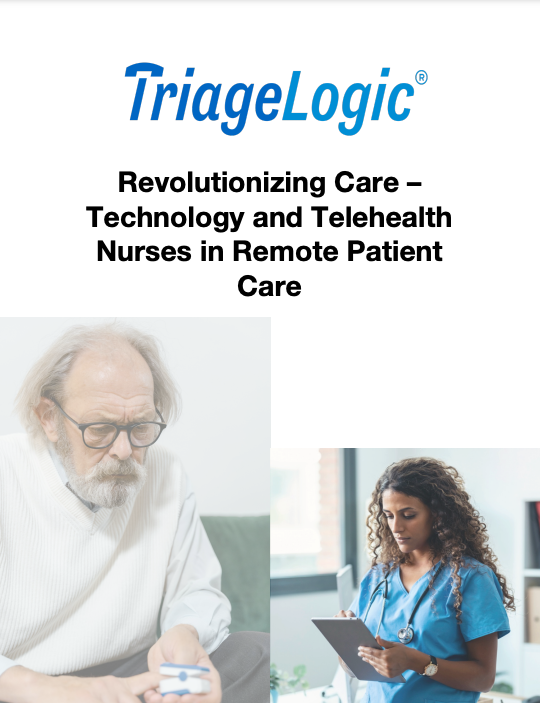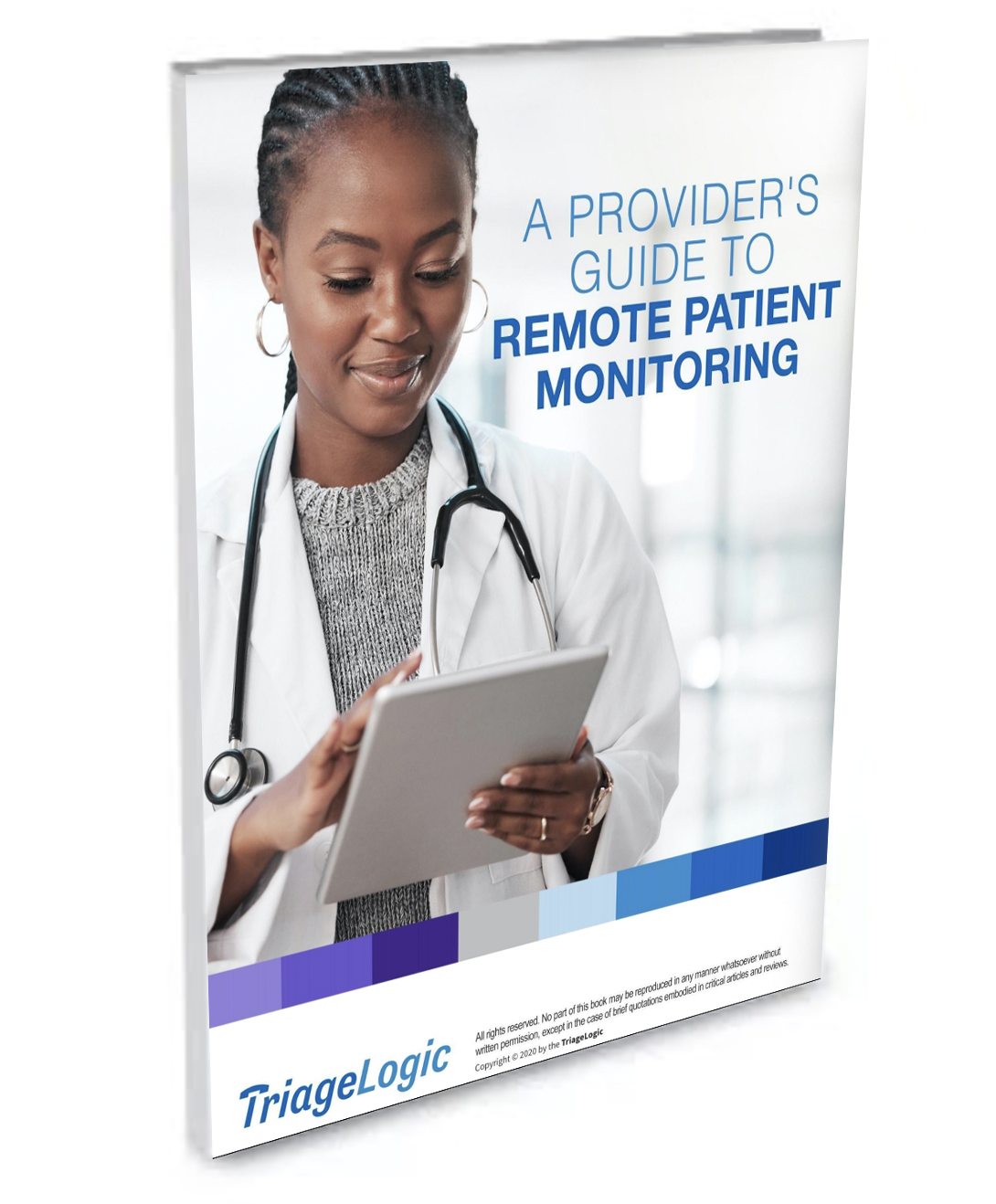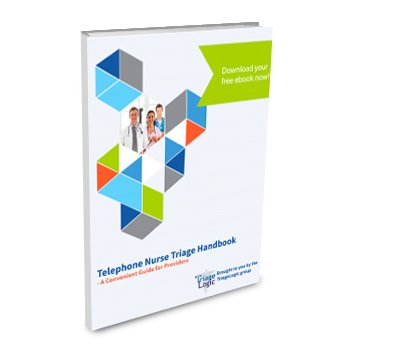How Triage Software Supports Call Centers
Do you manage a busy medical call center that deals with nonstop phones, anxious patients, overwhelmed nurses, and providers asking for clearer patient notes? Gaps in clinical communication can quickly turn into patient safety concerns, and inefficient workflows can disrupt an entire health system. That’s why many call center managers benefit from triage software that can create more consistent, accurate, patient-centered documentation.
For many organizations, TriageLogic’s myTriageChecklist® (MTC) has become that much-needed bridge, helping call centers manage their patient requests in a much more efficient, standardized, and safe manner.
Selecting the appropriate triage software depends on a few factors. Let’s talk about them.
What Triage Software Really Does
Triage software is more than a digital form or checklist. At its core, it serves as a decision-support system that guides registered nurses through patient symptom evaluations with the aid of evidence-based protocols. The best software allows nurses to document every interaction clearly, along with the dispositions they determine are the most appropriate to meet those patients’ needs.
The biggest benefit from having nurse triage software is its ability to standardize telephone guidance. This means fewer missed symptoms and delays because nurses are quickly able to determine the worst-case scenarios that patients may be facing and advise them on what types of care they should seek.
Triage software should offer:
- Guided nurse assessments using triage protocols.
- Structured, real-time documentation.
- Secure, HIPAA-compliant data management.
- Files that integrate with other in-house systems like EHRs.
- Analytics to measure performance and QA.
This tool isn’t a replacement for clinical judgment. It helps nurses work faster, safer, and more accurately, which leads to better patient care, fewer burdens on practices and hospitals, and communication that’s supported across clinical teams.
Why Triage Software Matters for Modern Clinical Workflows
It Improves Documentation Accuracy
One of the biggest risks for call centers is incomplete or inconsistent notes. With triage software capturing data in real time, nurses produce more detailed and clinically relevant information that is presented in a convenient format for providers to review.
It Reduces Physician Interruptions
When symptom details are captured correctly the first time, fewer calls get escalated unnecessarily. Instead of spending time seeking clarification, providers receive clear notes that outline recommended dispositions, and can focus more on direct patient care.
It Ensures Standardized Patient Assessments
Using structured triage protocols means that every patient receives the same high-quality evaluation regardless of which nurse takes the call. This promotes clinical consistency and accuracy, and lowers the risk of inappropriate care recommendations.
It Strengthens Continuity of Care
The best triage software can integrate with EHRs, which allows for patient information to be shared completely with the appropriate clinical teams in a timely manner. Nurses no longer manually retype notes or transfer data between systems.
It Enhances the Patient Experience
When calls become structured and clear, patients feel heard, informed, and reassured. This emotional connection is vital when callers are experiencing confusion, fear, or anger, or they’re coping with potentially serious symptoms.
It Supports Staffing Challenges
Clear scripts, decision trees, and automatic prompts allow new triage nurses to learn the process much more quickly, and guide them through even the most stressful phone situations.
The Pain Points Triage Software Solves for Call Center Managers
Call center managers face unique obstacles that traditional systems can’t address.
- Unpredictable call surges during flu season, RSV spikes, or regional outbreaks.
- Manual workflows that create the need for double-entry data.
- Inefficient communication between triage nurses and providers.
- Inconsistent symptom assessments between team members.
- Liability from missing or under-documenting red-flag symptoms.
- Lack of visibility into call volume, performance, or protocol usage.
These issues are precisely why triage software has become a must-have tool for modern healthcare organizations.
Example Scenarios of Triage Software Benefits
Before Triage Software
A patient calls in to a practice to report chest tightness. When a nurse calls the patient back, they write a short, unclear message which prompts a physician to call back again for clarification. The patient grows anxious as more time is spent before ever getting assistance.
After Triage Software
Had the nurse used triage software, they would have been prompted to ask specific, evidence-based questions. Their documentation would have been more thorough, and the provider would have had a clear understanding of reported symptoms, patient history, and a recommended disposition — all of which would have allowed the physician to determine a proper course of action in less time.
Image This Scenario at Your Practice
A sudden surge of fever-related calls overwhelms your nurses. Without structured support, assessments could vary widely; but, because your team has triage software, every call follows the same clinically validated pathway, allowing nurses to prioritize red-flag symptoms instantly.
This is the difference between taking calls and coordinating care.
What High-Quality Triage Software Should Include
When evaluating triage solutions, call center managers should look for:
- Gold-standard protocols (Schmitt-Thompson).
- HIPAA-compliant cloud hosting.
- EHR integration.
- Real-time documentation.
- Customizable workflows.
- Quality assurance dashboards.
- Scalability for growing call volume.
- Clinical oversight and long-term support.
TriageLogic’s myTriageChecklist stands out because it was built by healthcare experts and meets all of these essential safeguards for quality patient care.
When call centers adopt MTC, they experience fewer escalations, more accurate assessments, and stronger continuity of care — all while reducing stress for nurses and improving patient outcomes.
Transform Your Call Center
Today’s healthcare landscape demands reliable, efficient, patient-centered communication. Triage software is the key to transforming your call center from one that’s reactive to a coordinated clinical asset. By using myTriageChecklist, your team will have a powerful tool for reducing liability, supporting clinicians, and delivering better patient care with every interaction.
If you’re ready to take the next step toward smoother workflows and improved outcomes, TriageLogic is here to help. Contact us today to learn more!
About TriageLogic
TriageLogic is a URAC-accredited, physician-led provider of top-quality nurse telehealth technology, remote patient monitoring, and medical call center solutions. Founded in 2006, the TriageLogic Group now serves more than 22,000 physicians and covers over 42 million lives nationwide.





